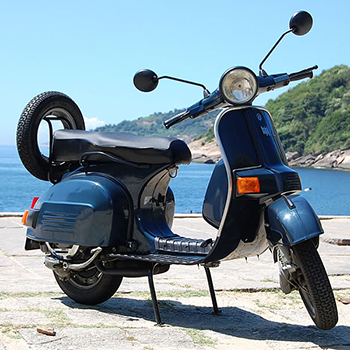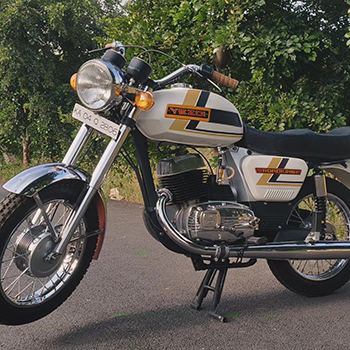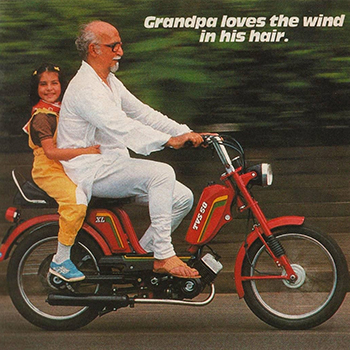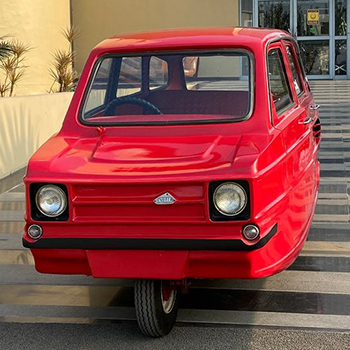Transport Automobiles
1971-1980
(4 items)
Transport Automobiles1971-1980
(4 items)
(4 items)
Bajaj Chetak
The Bajaj Chetak 1972 was an iconic scooter inspired by the Piaggio Vespa Sprint and became a symbol of affordable urban mobility in India. Its design included a large, cosy seat for two, a level floorboard, a rounded front apron, and a traditional curving monocoque steel body. A 2-stroke, single-cylinder, air-cooled 145 cc engine that produced roughly 6–7 horsepower and was connected to a 4-speed hand-shifted gearbox powered the scooter. For basic comfort, it featured a trailing-link front suspension, drum brakes on both wheels, and a kick-starter mechanism. Before Bajaj Auto completely localised production, manufacturing was done in its Akurdi plant near Pune under a licensing arrangement with Piaggio. While parts like the handlebars, rims, and engine casing were built of aluminium alloy to balance weight, the frame and body panels were constructed of pressed steel for durability. The scooter moved on 8-inch steel wheels with tube-style tyres and had a seat with vinyl upholstery and foam padding. In the 1970s, its tough construction, fuel efficiency (around 35 to 40 km/l), and ease of maintenance made it incredibly popular throughout India.
Details >>Yezdi Roadking
The Yezdi Roadking 1978 was a robust two-stroke motorcycle manufactured by Ideal Jawa Ltd., Mysore, and was based on the CZ 250 motocross bike from Czechoslovakia. It had a 247 cc, air-cooled, single-cylinder, two-stroke engine that produced about 16 horsepower. It was connected to a 4-speed gearbox with a special dual-shift lever, which doubled as a gear lever and a kick-starter. With a flat seat, a teardrop-shaped fuel tank, and little bodywork, the design was muscular but simple, prioritising utility above showmanship. The fuel tank and side panels were composed of pressed steel, and the frame was a double cradle of tubular steel for strength and rigidity. Weight was decreased by using an aluminium alloy for the engine housing and hubs. It featured two 16-inch spoked wheels with drum brakes, telescopic front forks, and twin hydraulic rear shock absorbers. The exhaust had a unique note thanks to its recognisable dual silencers. The Roadking gained popularity among enthusiasts, rally riders, and even the military because of its dependability, exceptional off-road capabilities, and durability.
Details >>TVS 50 XL
The TVS 50 XL (1980) was a lightweight moped designed for affordability, ease of use, and rugged performance for Indian road conditions. Large, spoked wheels for improved stability on uneven terrain, a flat seat for rider and pillion comfort, and a simple step-through frame with little bodywork were all features of its design. It was incredibly easy to ride without the need for manual gear shifting due to its 49cc, 2-stroke, single-cylinder, air-cooled engine and single-speed automated or centrifugal clutch gearbox. TVS Motor Company handled the manufacturing, localising a lot of parts to keep costs down and guarantee simple maintenance. The fuel tank and panels were constructed of mild steel with enamel paint for corrosion resistance, while the chassis was composed of pressed steel for durability and low weight. To save money and weight, mudguards, side covers, and grips were made of lightweight plastic and rubber components. The moped had a primitive suspension system (rear coil springs and telescopic front forks), few electrical components, and a basic drum brake system. It was a well-liked option in rural and semi-urban India due to its economical design, low maintenance requirements, and fuel efficiency.
Details >>


